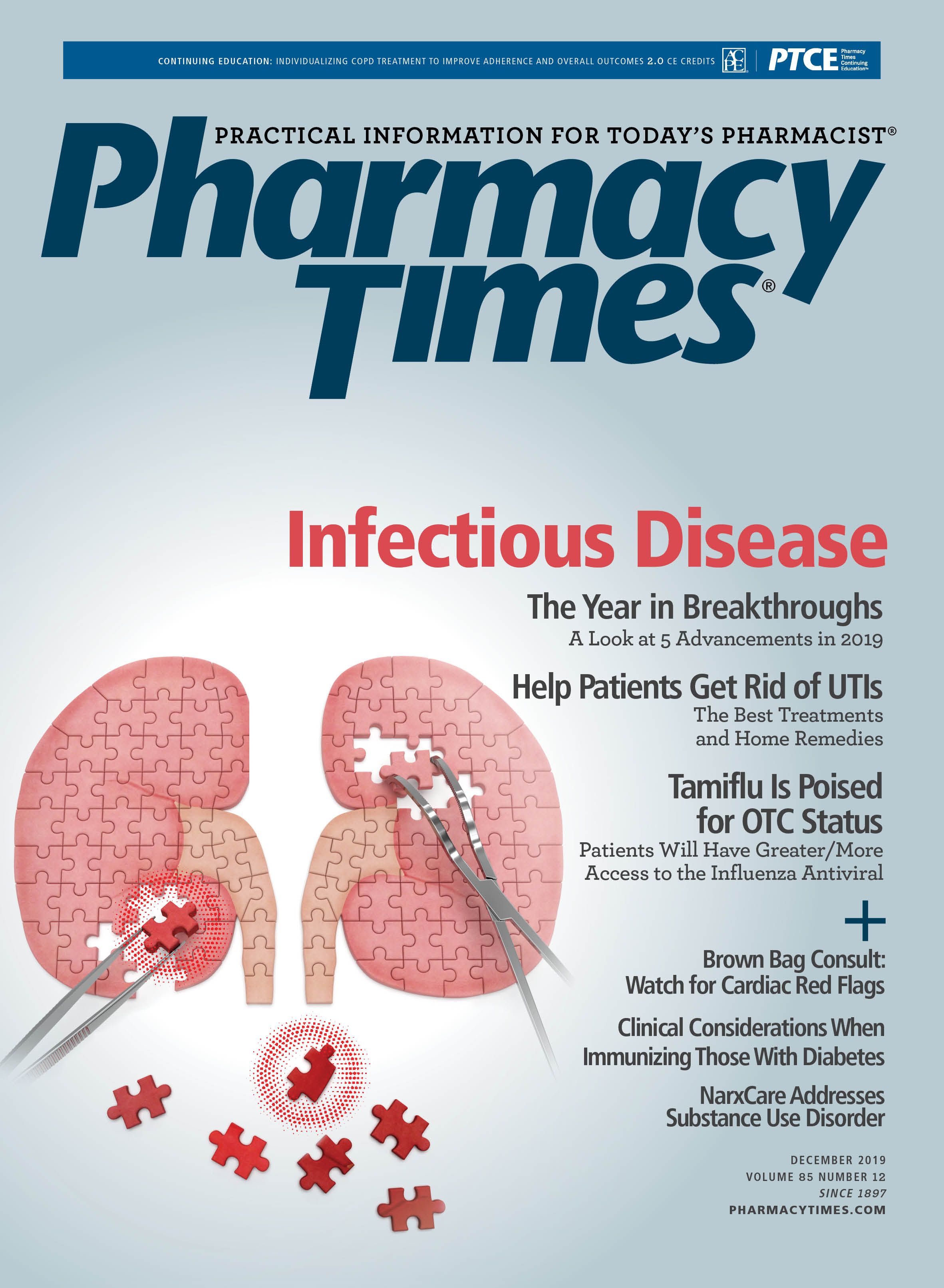Case Studies (December 2019)
Pharmacy case studies for December 2019.
Case 1
KM is a 9-year-old boy who was recently prescribed codeine for postoperative pain from an adenoidectomy and a tonsillectomy. Despite the prescribing and administering of the manufacturer’s recommended dose, he continues to complain of pain at a score of 8 on a 0-to-10 numeric pain scale. The pharmacist recommends ordering pharmacogenomic testing of the cytochrome P450 (CYP) 2D6 enzyme. KM’s result is reported as (*4/*4)2N.
How should the pharmacist interpret this finding?
A: KM has inherited 2 copies of a nonfunctional CYP2D6 allele, indicating that he is a poor metabolizer. Codeine is a prodrug, which requires conversion to morphine in the liver to produce its analgesic effect. If KM is a poor metabolizer of CYP2D6, he will not produce suffi cient amounts of morphine to reduce his pain effectively. This explains why despite an adequate dose of codeine, he is still in pain.
Case 2
LB is a 49-year-old woman who is a frequent customer at the pharmacy. She comes to pick up her refi ll for lisinopril. While talking with LB, you learn that she is having some difficulty sleeping. She reports having trouble staying asleep most nights. LB is able to easily fall asleep but wakes up 2 to 3 times per night. This has been going on for the past 4 months. LB thinks her lack of sleep is impairing her ability to work as a computer programmer. She wants to ask her primary care physician (PCP) for a sleeping pill and seeks your recommendation. LB says that her insurance company covers ramelteon (Rozerem), suvorexant (Belsomra), and zaleplon (Sonata). She is otherwise healthy and denies having any medication allergies.
Which covered medication may be best to recommend for LB’s symptoms?
A: LB seems to be experiencing sleep maintenance insomnia. Prior to prescribing medication, her PCP or pharmacist should screen for predisposing factors such as caffeine intake, stimulant medication use, and stress. Counseling LB on both sleep hygiene and stimulus control should be part of her care plan. If medication is deemed appropriate, suvorexant would be the most appropriate choice based on her insurance coverage. It is indicated for sleep maintenance insomnia. Both ramelteon and zaleplon would be effective only if LB were experiencing diffi culty falling asleep, from sleep onset insomnia, for instance.
Stefanie C. Nigro, PharmD, BCACP, CDE is an associate clinical professor at the University of Connecticut in Storrs.

